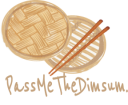This is the most real and relatable scene: you see a tempting, short-expiry item on sale, you want it because it’s too great a deal to pass on, aren’t entirely sure what you’ll do with it but do know it won’t go to waste. Enter the giant tub of Philadelphia cream cheese on sale at Chef Middle East, and I add to cart this whopping 1.65 kgs of calories destined to become a Hojicha infused San Sebastian Basque Cheesecake.
After my recent (and successful) attempt at French Earl Grey and Burnt Honey Bundettes, I knew I wanted to make more tea-infused desserts, so I rustled through my tea cupboard for inspiration and found a giant pouch of Hojicha that was a tad past its prime. Sidebar: is it just me or is Hojicha always sold in giant pouch, especially that which you buy from Japan? Is it because Hojicha stems are so big or because it is consumed so copiously in Japan? Do leave a comment below if you know the history and reasoning behind the giant pouches!
What is a San Sebastian Basque cheesecake, what makes it different from a classic cheesecake and why did I choose to make this instead of the classic? Because it’s the anti-cheesecake that breaks all the rules, celebrates all the ‘imperfections’ and still works. There’s no need for a water bath, you crank up the temperature, and the char on top is actually supposed to be there. It’s indulgent and unpretentious both at once. I love a no-fuss dessert that’s still made from scratch yet tastes decadent and that’s exactly what this is. If there was ever a dessert that was a reflection of me, it would be the San Sebastian Basque cheesecake, and for more reasons than its podgy appearance.
What is Hojicha? Hojicha is a Japanese green tea that originated in Kyoto over 100 years ago, and in a way is a byproduct of tea as it’s mostly made of the leftover debris of leaves and stems that didn’t make the cut. It’s made of Bancha (or Common Tea) from the last harvest of the season. It’s unique in that it is roasted in a porcelain pot over charcoal. Hojicha used to be poor man’s tea but now it is consumed large and wide, and especially enjoyed as a cold brew.
How to infuse Hojicha into the cheesecake while still maintaining the smooth creamy texture and not watering it down? Very simple: you infuse it into the cream by bringing the cream to a boil and then letting the Hojicha steep in it. When it’s time to add this cream into the batter, you make sure to use a fine sieve to strain out all the bits of tea.
The recipe for this Hojicha infused San Sebastian Basque Cheesecake I used is almost the exact same recipe that was Bon Appetit Magazine, and all I did was infuse Hojicha into the cream and skip the Sherry. Here’s what I did:
Serves: 8
Ingredients:
-
Unsalted butter (to line pan with)
-
900 grams Philadelphia cream cheese, room temperature
-
1½ cups sugar
-
6 large eggs
-
1 tsp. kosher salt
-
1 tsp. vanilla extract
-
⅓ cup all-purpose flour
- 1 cup Hojicha tea
-
2 cups heavy cream
Equipment:
- 9 inch spring-form or loose-bottom baking pan
- Electric whisk or stand mixer
- Parchment paper (do not use wax paper)
- Spatula
- Measuring cups
Method:
- Preheat oven to 210 degrees
- Butter the spring-form or loose-bottomed baking pan, and then line with 2-3 overlapping sheets of parchment paper, making sure that the parchment paper comes at least 2 inches above and don’t worry if the parchment paper is pleated and creased.
- Beat cream cheese and sugar in the bowl (preferably of a stand mixer fitted with the paddle attachment) on medium-low speed until the sugar has fully dissolved and there are no lumps left.
- Increase speed to medium and add the eggs one at a time, beating each egg for about 15 seconds before adding the next.
- Scrape down sides of bowl, then reduce mixer speed to medium-low. Add cream, salt, and vanilla and beat until combined, about 30 seconds.
- Switch off mixer and sift flour evenly over cream cheese mixture. Fold in the flour until it is fully incorporated and the mixture is smooth and homogenous.
- Pour batter into the prepared pan. Bake cheesecake until deeply golden brown on top and still very jiggly in the center, about 45-60 minutes. You can open the oven to check up on the cake once it has been in for 20 minutes, but don’t open the oven too often. After 30 minutes, if it appears to be browning too fast, turn the heat down by 10 degrees, and if it appears to be too pale, turn the heat up.
- In case your cake doesn’t appear to be burnt at all, you can turn on the top broiler for the last 5-10 minutes, but make sure not to overbake your cake by leaving it in for too long as it will lose the intended smooth silkiness.
- Let it cool slightly before you unmold, and let cool completely before you peel away the parchment paper. Carefully peel away parchment from sides of cheesecake. Slice into wedges and serve at room temperature.
-
Do Ahead: Cheesecake be made 1 day ahead. Chill uncovered in the fridge to keep the top crispy. Be sure to let cheesecake sit for several hours at room temperature to remove chill before serving.













